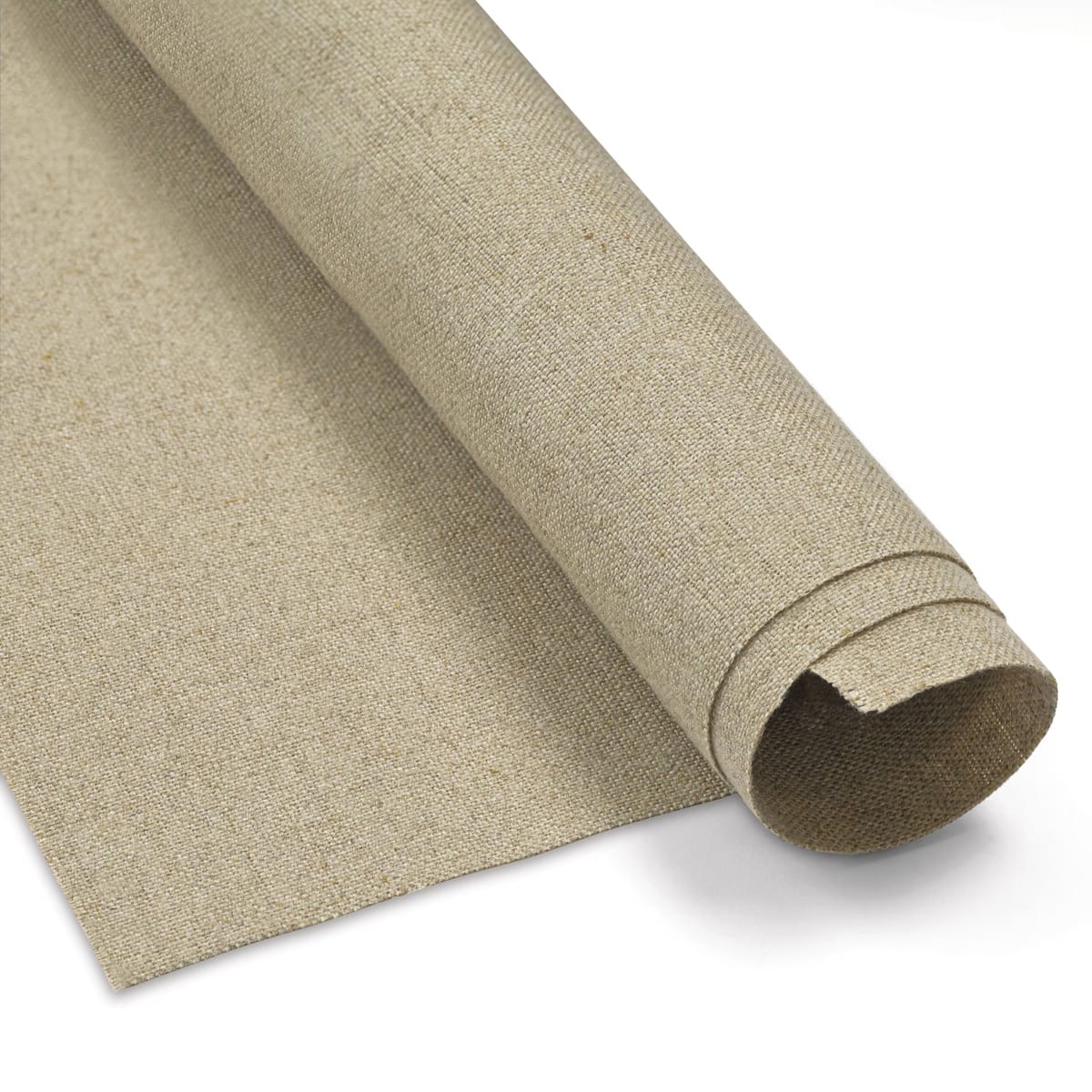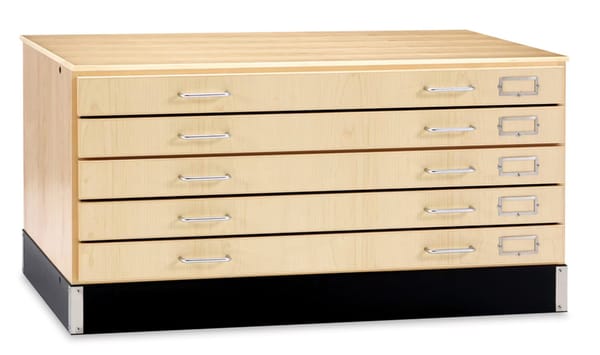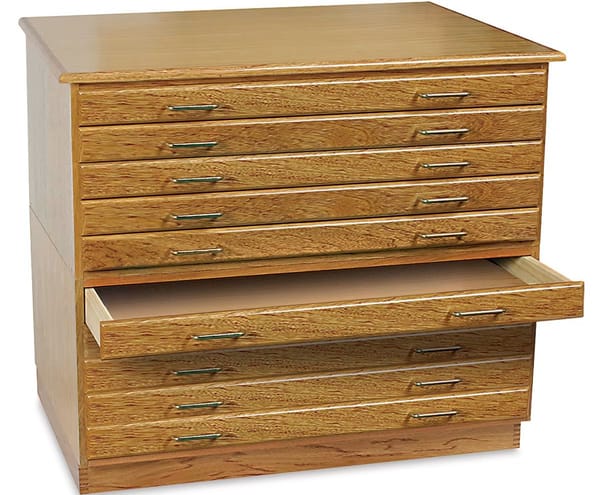Belgian Linen Canvas: The Painter's Choice for Quality and Control
Experience true craftsmanship with Belgian Linen Canvas - refined surface, lasting durability, and perfect control for serious artists.

Belgian linen canvas often appears quiet and simple, yet it changes how paintings feel, age, and survive in studios, homes, and galleries. Many artists view it as a long-term partner rather than a disposable support when work moves toward collectors or exhibition walls.
What Is Belgian Linen Canvas?
Belgian linen canvas is a painting fabric woven from European flax fibers in Belgium, valued for its strength, subtle texture options, and very stable, archival behavior over decades. Flax plants grow in cool coastal climates, then become long fibers, strong threads, and tightly woven cloth. Belgian mills hold deep experience with flax, so the finished canvas usually feels even and dependable.
Artists often compare linen canvas with cotton when planning serious work. Cotton feels soft and familiar, but stretches and sags more easily. Linen holds tension better and supports a calmer, more controlled surface.
Why Do Artists Prefer Belgian Linen Canvas?
Artists often prefer Belgian linen because strong flax fibers, stable tension, and subtle weaves together support smooth painting, clear color, and slow, predictable aging in finished work. This mix suits both careful realism and bold expressive styles, so one fabric serves many different studio needs.
Superior Strength and Long Fibers
Flax plants used for Belgian linen grow tall and produce long fibers. These long fibers spin into tough threads that resist tearing and stretching. So even large canvases stay firm under heavy paint.
Archival Stability and Museum-Grade Longevity
Belgian linen reacts slowly to normal humidity changes. The fabric sags less, warps less, and moves more gently under the paint film. This calm movement helps reduce cracking and keeps the surface stable for decades.
Enhanced Surface Feel for Oil and Acrylic
The weave of Belgian linen is usually even and controlled. Brushes glide with a soft drag, edges stay clean, and glazes sit in smooth, thin layers. Both oil and acrylic colors tend to look rich instead of dull or patchy.
Natural Texture Options
Belgian linen comes in fine, medium, and rough textures. Fine weave suits portraits and detail, medium weave suits general studio work, and rough weave suits thick, expressive marks. You can match the surface to the way you like to paint.
Belgian Linen vs. Cotton Canvas
Belgian linen differs from cotton canvas through stronger flax fibers, steadier tension, richer texture options, and slower aging, while cotton offers lower cost and wide availability. Studios often use cotton for studies and trials, and linen for important, long-term, or sale-focused artworks.
Strength and Durability
Linen threads made from long flax fibers are tougher than cotton threads made from shorter staples. Because of this, linen fabric resists pulling and tearing better. It’s especially noticeable on big, heavy canvases.
Texture and Weave Character
Cotton canvas often has a simple, predictable texture. Belgian linen offers finer portrait weaves and stronger, more characterful rough weaves. That variety lets you choose a surface that supports your subject and style, not just your budget.
Aging and Yellowing
Both materials can yellow if abused, but cotton usually changes faster. Flax fibers hold their strength and color better under normal indoor light and humidity. This helps keep the ground and paint film more stable in the long run.
Price and Value
Belgian linen is more expensive because flax farming, fiber preparation, European weaving, and careful priming all cost more. However, that extra cost buys consistency, strength, and collector confidence. Many artists use cotton for studies and linen for the work that really matters.
How is This Canvas Made?
Belgian linen canvas forms through linked steps that take flax from coastal fields to strong, tightly woven fabric ready for priming and paint. Each stage shapes strength and texture, so farming, processing, spinning, and weaving all influence the final canvas's behavior.
Step 1 - Growing and Harvesting Flax in Belgium
Flax for Belgian linen grows in cool, moist climates with mild summers. These conditions help the plants grow tall and straight. That height gives longer fibers, which later become stronger threads.
Step 2 - Retting, Scutching, and Preparing Fibers
After harvest, stems go through retting and scutching. Retting softens the natural glue that holds fibers in the stem. Scutching knocks away woody pieces, leaving clean bundles ready for spinning.
Step 3 - Spinning into Long, Consistent Threads
Prepared flax fibers are twisted into yarn. Spinners control thickness and twist, which sets the base character of the future canvas. Fine yarn leads to smoother linen; thicker yarn leads to stronger, more textured cloth.
Step 4 - Weaving the Linen Cloth
Warp threads run lengthwise, and weft threads cross them on the loom. Tension and spacing decide how open, dense, smooth, or toothy the fabric will be. Good weaving keeps the cloth flat and predictable across the whole roll.
Step 5 - Priming: Oil vs. Acrylic Priming
Once woven, the linen is sized and primed. Oil-primed linen uses oil-based grounds that feel slightly slick and less absorbent, ideal for traditional oil techniques. Acrylic-primed linen uses acrylic gesso, which dries faster and feels more absorbent and toothy.
What “Double-Primed” and “Triple-Primed” Actually Mean
Double-primed and triple-primed simply mean two or three coats of ground. More coats fill the weave more completely, make the surface smoother, and reduce absorbency. Colors then sit higher and often look brighter from the first passes.
Types of Belgian Linen Canvas
Types of Belgian linen canvas include unprimed cloth, oil-primed surfaces, acrylic-primed surfaces, and several weave categories for different media and styles. Labels usually show priming type and texture, which helps match supports to portraits, landscapes, abstracts, or mixed media work.
Unprimed
Unprimed linen is raw cloth with no ground. It’s best for artists who want to control every step, from sizing to final priming. You can keep the natural color visible with clear grounds or create custom surfaces with your own recipes.
Oil-Primed
Oil-primed linen is ready-made for oil painting. The surface feels smooth with gentle drag. Paint stays workable a bit longer, blends softly, and doesn’t sink in as quickly. Many portrait and realism painters choose this option for serious work.
Acrylic-Primed
Acrylic-primed linen is ideal for acrylic painters and mixed media. The acrylic gesso dries quickly and grips paint well. It often has more tooth, which is helpful for layered, fast-drying techniques and textured applications.
Fine, Medium, and Rough Weaves
Fine weave is tight and subtle, which is perfect for faces, glass, and small details. Medium weave is a good all-purpose choice for landscapes, still life, and general studio work. Rough weave is bold and visible and works well for thick paint, knife work, and expressive mark-making.
How to Choose the Right Canvas For You?
The choice of Belgian linen canvas often depends on the painting style, preferred medium, scale, and budget, with the weave and priming together shaping the touch and appearance. Realist painters often favor fine surfaces, while textured and abstract painters often seek heavier weaves and stronger grounds.
- Match the weave to your style. Fine weave suits tight realism and detail, medium weave suits mixed and general work, and rough weave suits bold, textured, expressive painting.
- Choose stretcher depth by size. Standard-depth bars work well for small, framed pieces, while deeper bars give large canvases better support and resist warping.
- Decide between rolls and pre-stretched. Rolls give full control over size and tension and can be cheaper per piece; pre-stretched linen saves time and arrives ready to paint.
- Pick the right priming. Oil-primed linen feels best for slow, traditional oil painting and blending, while acrylic-primed linen suits fast, layered acrylic and mixed media work.
- Plan with your budget. Use cotton for studies and tests, save Belgian linen for finished pieces and commissions, and watch for sales or buy smaller sizes to control costs.
How to Prepare and Work on Belgian Linen Canvas
Preparation and working methods on Belgian linen usually stay simple when factory priming remains intact, with extra steps reserved for specific surface preferences. Many canvases accept paint from the first session, while others receive light sanding, extra gesso, or thin toning washes.
Do You Need Extra Gesso?
Factory-primed linen is often ready to use. However, if the surface feels too rough or too absorbent, you can add a thin coat or two of gesso. This smooths the tooth and evens out absorbency. Use clear gesso if you want to keep the natural color.
Toning
Toning is a simple wash of color over the ground. It cuts the glare of white and gives you a middle value to judge lights and darks. Many artists use warm umber, soft grey, or a muted color that matches the mood of the painting.
How Belgian Linen Reacts to Different Paints
On oil-primed linen, oil paint glides and blends slowly, which suits glazing and soft transitions. On acrylic-primed linen, acrylics grip quickly and build layers fast. Alkyd oils dry faster than traditional oils but behave similarly on the surface.
Tips for Maintaining Tension and Preventing Sag
To keep tension, store canvases in spaces with moderate humidity and temperature. Avoid direct blasts of hot or cold air. If you see light ripples, you can often adjust the stretcher keys gently. Deep sagging or twisting is a sign to re-stretch or consult a framer.
Caring for Belgian Linen Canvas
Caring for Belgian linen canvas centers on calm storage, gentle cleaning, controlled humidity, and timely attention to sagging so fabric and paint remain sound. Finished artworks and blank canvases both respond well to similar conditions.
Storage Best Practices
Storage works best in clean, dry rooms where dust, strong light, and sharp humidity swings are limited across seasons. Paintings usually stand upright on padded edges with small gaps.
How to Clean and Dust Finished Paintings
Cleaning and dusting finished paintings on Belgian linen relies on soft tools and light contact that disturbs surfaces as little as possible. Soft brushes lift loose dust; heavy grime needs conservation advice.
How to Protect Linen from Humidity Fluctuations
Protection from humidity fluctuations comes from steady indoor climates, framed backs, and avoidance of very damp basements or extremely dry attics. Moderate humidity helps fibers avoid harsh expansion and contraction.
When to Re-Stretch or Re-Tighten Canvas
Re-stretching or re-tightening Belgian linen becomes useful when clear sagging, ripples, or corner distortions remain visible under otherwise stable room conditions. Long diagonal slack lines often show real movement.
Final Thoughts
- Belgian linen offers strong flax fibers, refined textures, stable tension, and slow, steady aging that together support ambitious, long-term painting projects.
- The fabric plays an important role in archival, museum-quality work, where collectors and institutions value reliable supports and predictable conservation behavior.
- Many artists reserve linen for commissions, exhibitions, and treasured personal pieces, while cotton supports practice, sketches, and early-stage exploration.
Frequently Asked Questions
Why is Belgian linen so expensive?
Belgian linen is expensive because European flax farming, careful fiber processing, skilled weaving, and high-quality priming all raise production costs while improving consistency and durability.
Is Belgian linen better than cotton canvas?
The linen is often better than cotton because long flax fibers give greater strength, steadier tension, richer textures, and slower, more controlled aging.
Can beginners use Belgian linen?
Beginners can use this linen because its stable surface and smooth priming support learning, although higher material costs often limit frequent use.
Should I choose oil-primed or acrylic-primed linen?
Oil-primed linen suits slower, traditional oil methods, while acrylic-primed linen suits faster, layered acrylic and mixed media approaches.
Does Belgian linen last longer?
Belgian linen usually lasts longer than cotton because strong flax fibers and careful weaving resist sagging, tearing, and extreme distortion.
How long does Belgian linen canvas last?
Belgian linen canvas can last many decades, and sometimes centuries, when combined with sound priming, thoughtful painting methods, and steady storage conditions.
Is unprimed Belgian linen suitable for painting?
Unprimed linen becomes suitable for painting only after proper sizing and priming, because raw flax fibers alone weaken under direct oil or water.




